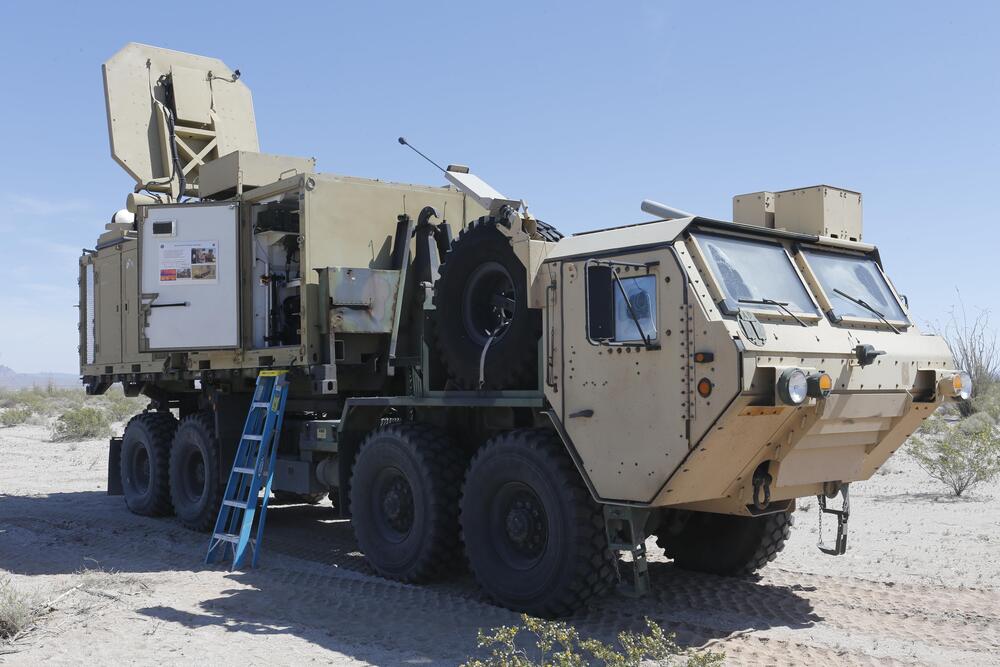Dog saved by drone.
“It was kind of like losing your child,” said the owner of the missing golden retriever dog.
Dog saved by drone.
“It was kind of like losing your child,” said the owner of the missing golden retriever dog.

So we’ve had close calls before, huh?
In the early morning of June 30, 1908, a massive explosion flattened entire forests in a remote region of Eastern Siberia along the Tunguska River. Curiously, the explosion left no crater, creating a mystery that has puzzled scientists ever since — what could have caused such a huge blast without leaving any remnants of itself?
Now Daniil Khrennikov at the Siberian Federal University in Russia and colleagues have published a new model of the incident that may finally resolve the mystery. Khrennikov and co say the explosion was caused by an asteroid that grazed the Earth, entering the atmosphere at a shallow angle and then passing out again into space.
“We argue that the Tunguska event was caused by an iron asteroid body, which passed through the Earth’s atmosphere and continued to the near-solar orbit,” they say. If they are correct, the theory suggests Earth escaped an even larger disaster by a hair’s breadth.
Mid-air refueling is almost a century old, but mid-air recharging is a newer phenomena.

“During the summer disturbances in Washington, D.C., a top local military police officer asked the D.C. National Guard about deploying two military systems that seem to come out of science fiction. One, the Active Denial System (ADS), makes the target’s skin feel like it’s on fire. The other, called the Long Range Acoustic Device (LRAD), directs intense sound in a narrow cone. The sound is so clear and so powerful that it was nicknamed “the voice of God.” I encountered both systems, one at Quantico, Virginia, the other in Falluja, Iraq. Here’s what I saw.”
DOD has two crowd control systems that are straight out of science fiction. One uses direct energy to create a burning sensation on exposed skin. The other is so loud that it sounds like the voice of God.
Given the possibility of orbital debris, space warfare will be different from what we imagine it to be (from Star Wars and Call of Duty). Watch this video to find out what it will look like!
*Note: I spelled the word “deficit” wrong in my subtitles. Guess I was too sleepy.
Space warfare is often depicted as battleships and marines fighting each other. Yet, in this video, I will talk about how the future of space warfare has more to do with satellites, orbital debris, and cyber warfare.
Discord Link: https://discord.gg/brYJDEr.
Patreon link: https://www.patreon.com/TheFuturistTom.
Please follow our instagram at: https://www.instagram.com/the_futurist_tom.
For business inquires, please contact [email protected].
Editor credits (Velinix):

Devising an effective AGI value loading system should be of the utmost importance. Interlinking of enhanced humans with AGIs will bring about the Syntellect Emergence which could be considered the essence of the Cybernetic Singularity. Future efforts in programming and infusing machine morality will surely combine top-down, bottom-up and interlinking approaches. #AGI #FriendlyAI #Cybernetics #BenevolentAI #SyntheticIntelligence #CyberneticSingularity #Superintelligence
A simple solution to achieve this might be to combine select human minds (very liberal, loving, peaceful types) with brain computer interfaces in a virtual environment. Work to raise an AGI who believes itself to be human and who believes in self sacrifice and putting the good of others above its own self. When this is achieved, let it sale they a virtual door to join humanity online.

Here the video of the first discussion panel out of two, during the celebration of the Healthy Masters Conference 2020, which took place on November 29, 2020. Nuno Martins, organizer and moderator of the event, asked all panelists to comment on the following theme: What can we do to improve our health and longevity. Given the essence of the event, the question was surrounded by the objective of achieving radical life extension or super longevity. My intervention starts at minute 20:13 and in the description of the video there are all the time marks that direct to the begining of each talk.
First discussion panel out of two, during the celebration of the Healthy Masters Conference 2020 which took place on November 29, 2020.
Nuno Martins, PhD, organizer and moderator of the event, asked all panelists to comment on the following theme: What can we do to improve our health and longevity?
Given the essence of the event, the question was surrounded by the objective of achieving radical life extension or super longevity.
Panelists in order of appereance:
* Naveen Jain: Founder and CEO of Moon Express Viome (00:21)
* Nichola Conlon, PhD: CEO & Founder of Nuchido (03:28)
* Kelsey Moody, PhD: Process Oriented Drug Developer and Executive (05:18)
* Peter Fedichev, PhD: Head of the Laboratory of Biological Systems (08:38)
* James Hughes, PhD: Executive Director of the Institute for Ethics and Emerging Technologies (12:12)
* María Entraigues Abramson: Global Outreach Coordinator for the SENS Research Foundation (15:14)
* Yael Sorek-Benvesti, PhD: CEO of Mediterranean Towers Venture (18:24)
* Andrés Grases, MBA: Owner and Editor of Transhumanplus.com (20:13)
* Ines O´Donovan: Founder of the Jeunessima Lifestyle Company (23:52)
* Reason, CEO of Repair Biotecnologies (27:39)
* Odette Tonnae: Founder of YOAKE, the Healthy Lifestyle Expertise.
Simulation at MIPT (31:53)

Fable Studio has announced two new conversational AI virtual beings, or artificial people. Their names are Charlie and Beck, and they will be able to hold conversations as if they were real people.
The new characters are a blend of storytelling and artificial intelligence, a marriage that Fable is pioneering in the belief that virtual beings will become a huge market as people seek companionship and entertainment during the tough climate of the pandemic.
CEO Edward Saatchi believes that virtual beings are the start of something big. He organizes the Virtual Beings Summit, and this summer he noted that virtual beings companies — from Genies to AI Foundation — have raised more than $320 million.
